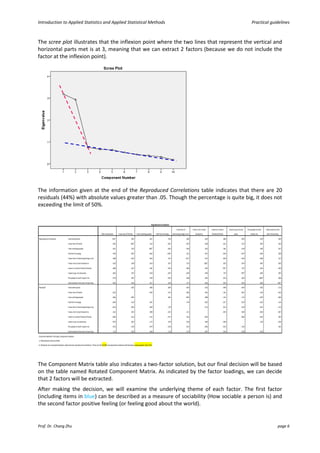The document discusses exploratory factor analysis (EFA) conducted on questionnaire data with 10 items measuring happiness from 200 respondents. EFA with principal axis factoring extracted 2 factors based on eigenvalues above 1, a scree plot analysis, and a rotated component matrix. The first factor reflected sociability and the second reflected positive feelings. Preliminary analyses like the KMO and Bartlett's test supported the factorability of the data.








